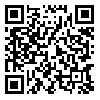1. Al Backer, N. B. (2016). Correlation between Autism Treatment Evaluation Checklist (ATEC) and Childhood Autism Rating Scale (CARS) in the evaluation of autism spectrum disorder. Sudanese Journal of Paediatrics, 16(1), 17.
2. Alsayouf, H. A., Talo, H., Biddappa, M. L., Qasaymeh, M., Qasem, S., & De Los Reyes, E. (2020). Pharmacological Intervention in Children with Autism Spectrum Disorder with Standard Supportive Therapies Significantly Improves Core Signs and Symptoms: A Single-Center, Retrospective Case Series. Neuropsychiatric Disease and Treatment, 16, 2779. [
DOI:10.2147/NDT.S277294] [
PMID] [
]
3. Association, A. P. (2013). Diagnostic and statistical manual of mental disorders (DSM-5®): American Psychiatric Pub.
4. Bent, S., Bertoglio, K., Ashwood, P., Nemeth, E., & Hendren, R. L. (2012). Brief report: hyperbaric oxygen therapy (HBOT) in children with autism spectrum disorder: a clinical trial. Journal of autism and developmental disorders, 42(6), 1127-1132. [
DOI:10.1007/s10803-011-1337-3] [
PMID]
5. Calvert, J. W., Cahill, J., & Zhang, J. H. (2007). Hyperbaric oxygen and cerebral physiology. Neurological research, 29(2), 132-141. [
DOI:10.1179/016164107X174156] [
PMID]
6. El-baz, F., Elhossiny, R. M., Azeem, Y. A., & Girgis, M. (2014). Study the effect of hyperbaric oxygen therapy in Egyptian autistic children: A clinical trial. Egyptian Journal of Medical Human Genetics, 15(2), 155-162. [
DOI:10.1016/j.ejmhg.2014.01.004]
7. El-Baz, F., Ismael, N. A., & El-Din, S. M. N. (2011). Risk factors for autism: An Egyptian study. Egyptian Journal of Medical Human Genetics, 12(1). [
DOI:10.1016/j.ejmhg.2011.02.011]
8. Gardener, H., Spiegelman, D., & Buka, S. L. (2009). Prenatal risk factors for autism: comprehensive meta-analysis. The British journal of psychiatry, 195(1), 7-14. [
DOI:10.1192/bjp.bp.108.051672] [
PMID] [
]
9. Health, T. N. I. o. M. (March 2018). Autism Spectrum Disorder. Health Topics. Retrieved from https://www.nimh.nih.gov/health/topics/autism-spectrum-disorders-asd/index.shtml
10. Hesapcioglu, S. T., Ceylan, M. F., Kasak, M., & Sen, C. P. (2020). Olanzapine, risperidone, and aripiprazole use in children and adolescents with Autism Spectrum Disorders. Research in Autism Spectrum Disorders, 72, 101520. [
DOI:10.1016/j.rasd.2020.101520]
11. Heuser, G., Heuser, S., Rodelander, D., Aguilera, O., & Uszler, M. (2002). Treatment of neurologically impaired adults and children with "mild" hyperbaric oxygen (1.3 ATA and 24% oxygen). Paper presented at the The Proceedings of the 2nd International Symposium on Hyperbaric Oxygenation for Cerebral Palsy and the Brain-Injured Child. JT Joiner (ed). Best Publishing Co: Flagstaff.
12. Kim, Y. S., Leventhal, B. L., Koh, Y.-J., Fombonne, E., Laska, E., Lim, E.-C., . . . Lee, H. (2011). Prevalence of autism spectrum disorders in a total population sample. American Journal of Psychiatry, 168(9), 904-912. [
DOI:10.1176/appi.ajp.2011.10101532] [
PMID]
13. Kloosterboer, S. M., de Winter, B. C., Reichart, C. G., Kouijzer, M. E., de Kroon, M. M., van Daalen, E., . . . van Altena, D. (2020). Risperidone plasma concentrations are associated with side effects and effectiveness in children and adolescents with autism spectrum disorder. British Journal of Clinical Pharmacology. [
DOI:10.1111/bcp.14465] [
PMID] [
]
14. Lam, G., Fontaine, R., Ross, F. L., & Chiu, E. S. (2017). Hyperbaric oxygen therapy: exploring the clinical evidence. Advances in skin & wound care, 30(4), 181-190. [
DOI:10.1097/01.ASW.0000513089.75457.22] [
PMID]
15. LeClerc, S., & Easley, D. (2015). Pharmacological therapies for autism spectrum disorder: a review. Pharmacy and Therapeutics, 40(6), 389.
16. Rellini, E., Tortolani, D., Trillo, S., Carbone, S., & Montecchi, F. (2004). Childhood Autism Rating Scale (CARS) and Autism Behavior Checklist (ABC) correspondence and conflicts with DSM-IV criteria in diagnosis of autism. Journal of autism and developmental disorders, 34(6), 703-708. [
DOI:10.1007/s10803-004-5290-2] [
PMID]
17. Rossignol, D. (2008). Hyperbaric oxygen for neurological disorders.
18. Rossignol, D. A., Rossignol, L. W., James, S. J., Melnyk, S., & Mumper, E. (2007). The effects of hyperbaric oxygen therapy on oxidative stress, inflammation, and symptoms in children with autism: an open-label pilot study. BMC pediatrics, 7(1), 36. [
DOI:10.1186/1471-2431-7-36] [
PMID] [
]
19. Schulz, K. F., Altman, D. G., & Moher, D. (2010). CONSORT 2010 statement: updated guidelines for reporting parallel group randomized trials. Annals of internal medicine, 152(11), 726-732. [
DOI:10.7326/0003-4819-152-11-201006010-00232] [
PMID]
20. Starkstein, S. E., Vazquez, S., Vrancic, D., Nanclares, V., Manes, F., Piven, J., & Plebst, C. (2000). SPECT findings in mentally retarded autistic individuals. The Journal of neuropsychiatry and clinical neurosciences, 12(3), 370-375. [
DOI:10.1176/jnp.12.3.370] [
PMID]
21. Xiong, T., Chen, H., Luo, R., & Mu, D. (2016). Hyperbaric oxygen therapy for people with autism spectrum disorder (ASD). Cochrane Database of Systematic Reviews(10). [
DOI:10.1002/14651858.CD010922.pub2] [
PMID] [
]
22. Zachor, D. A., & Itzchak, E. B. (2010). Treatment approach, autism severity and intervention outcomes in young children. Research in Autism Spectrum Disorders, 4(3), 425-432. [
DOI:10.1016/j.rasd.2009.10.013]




